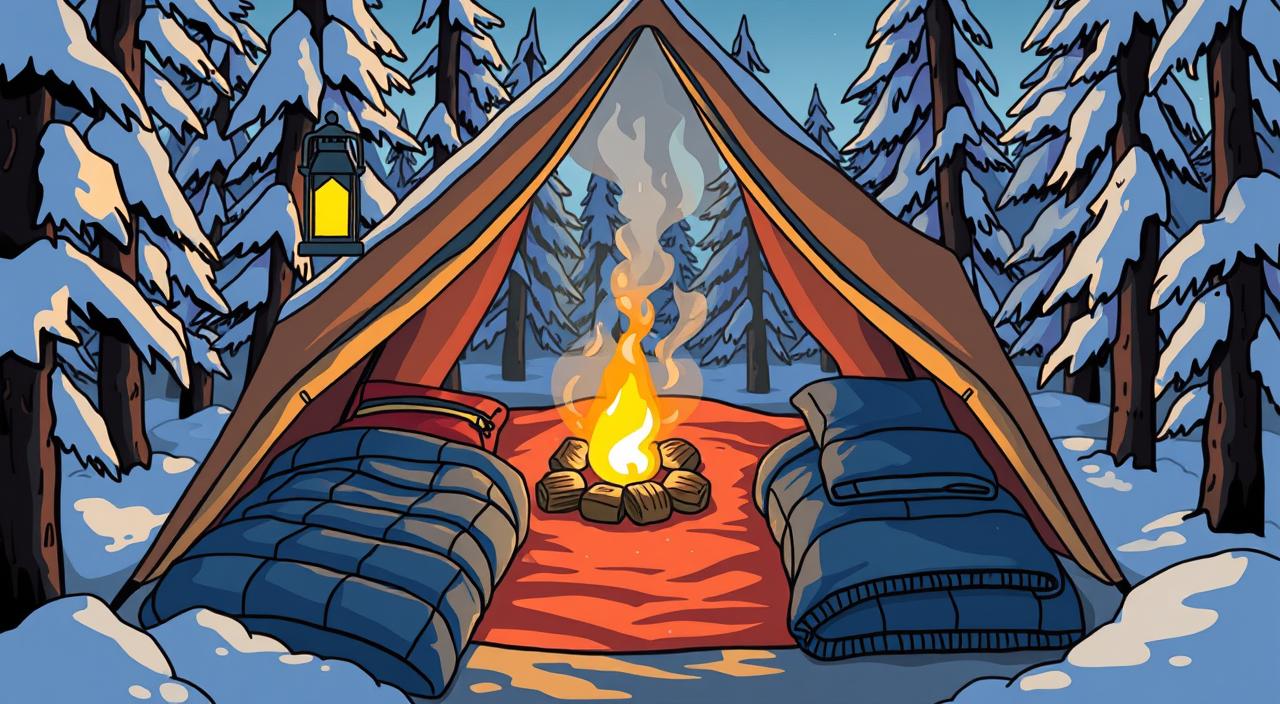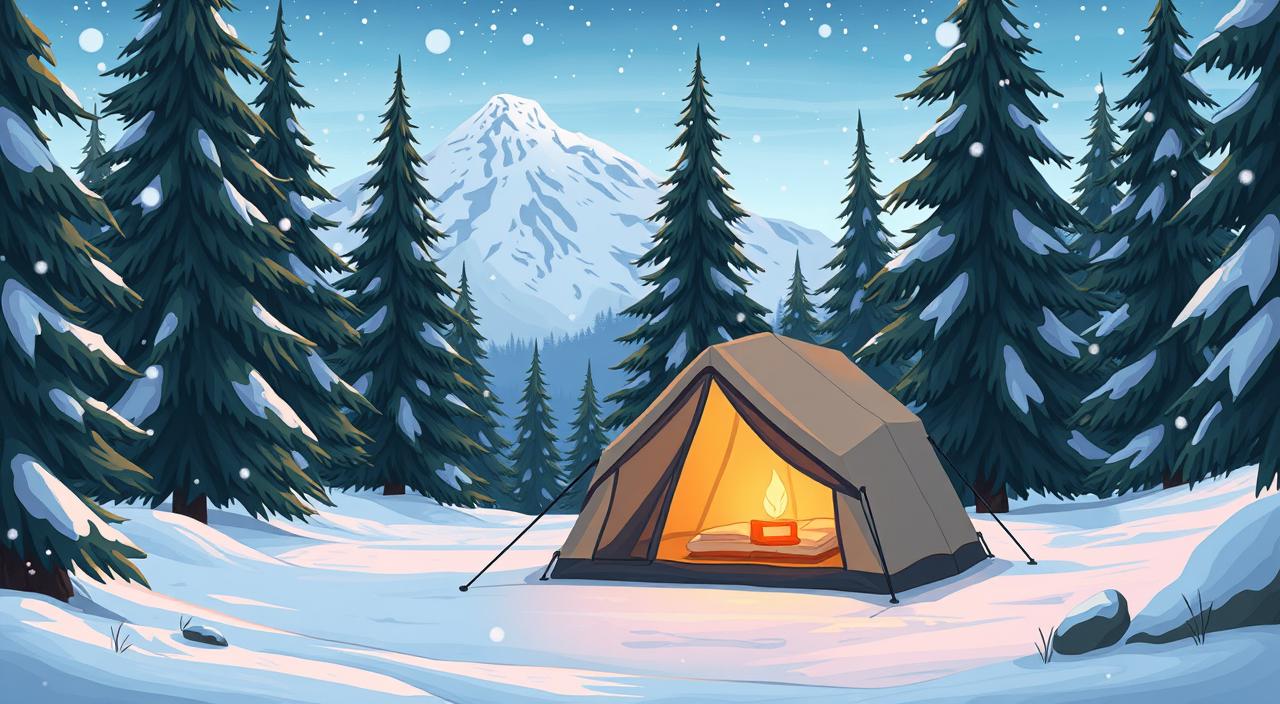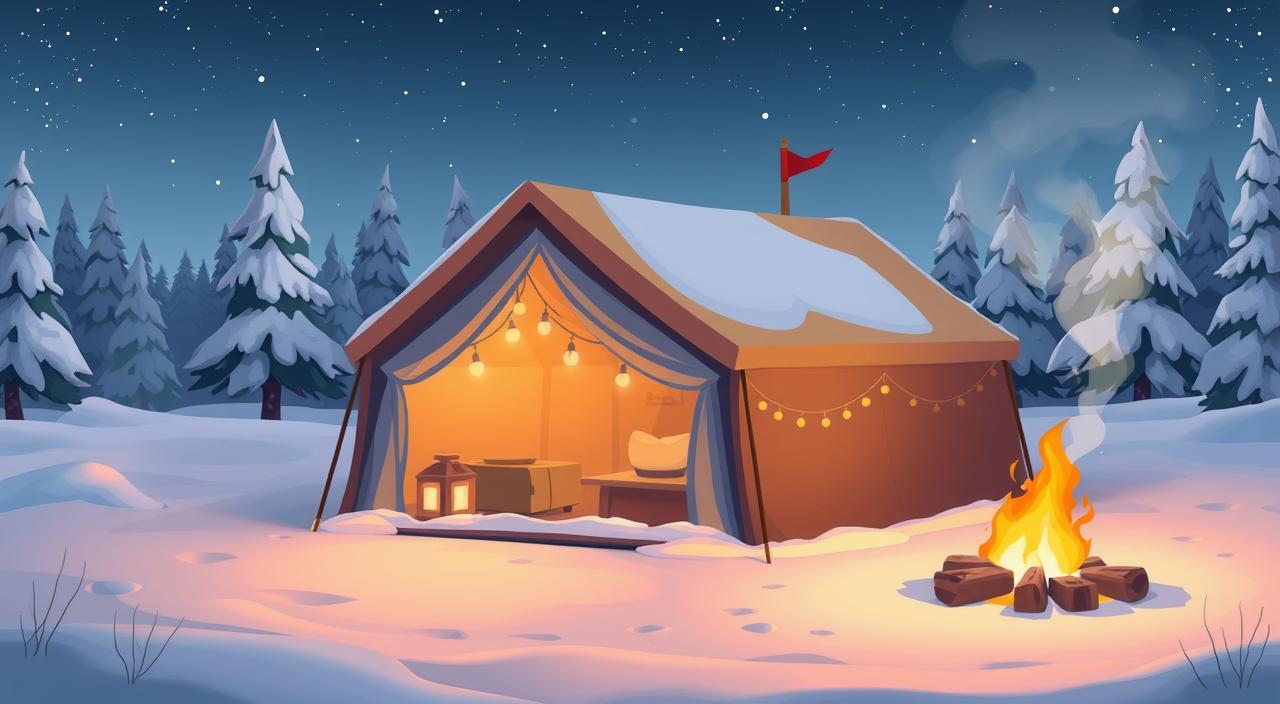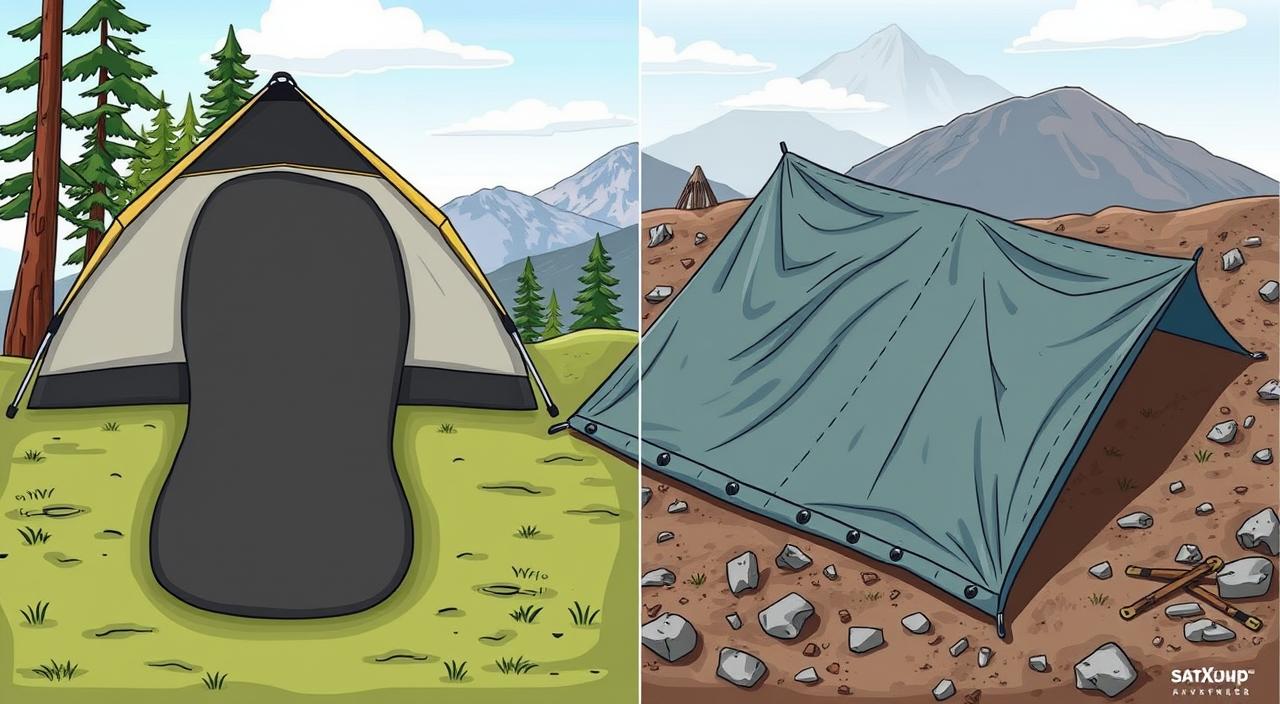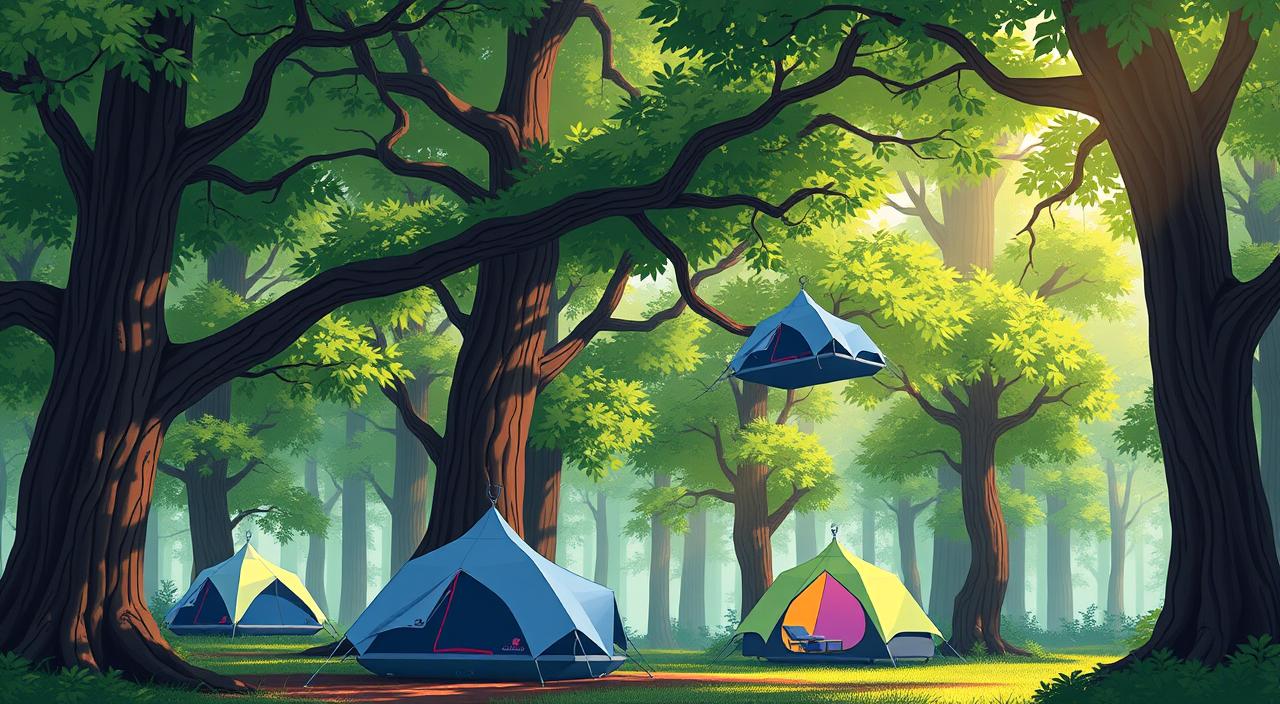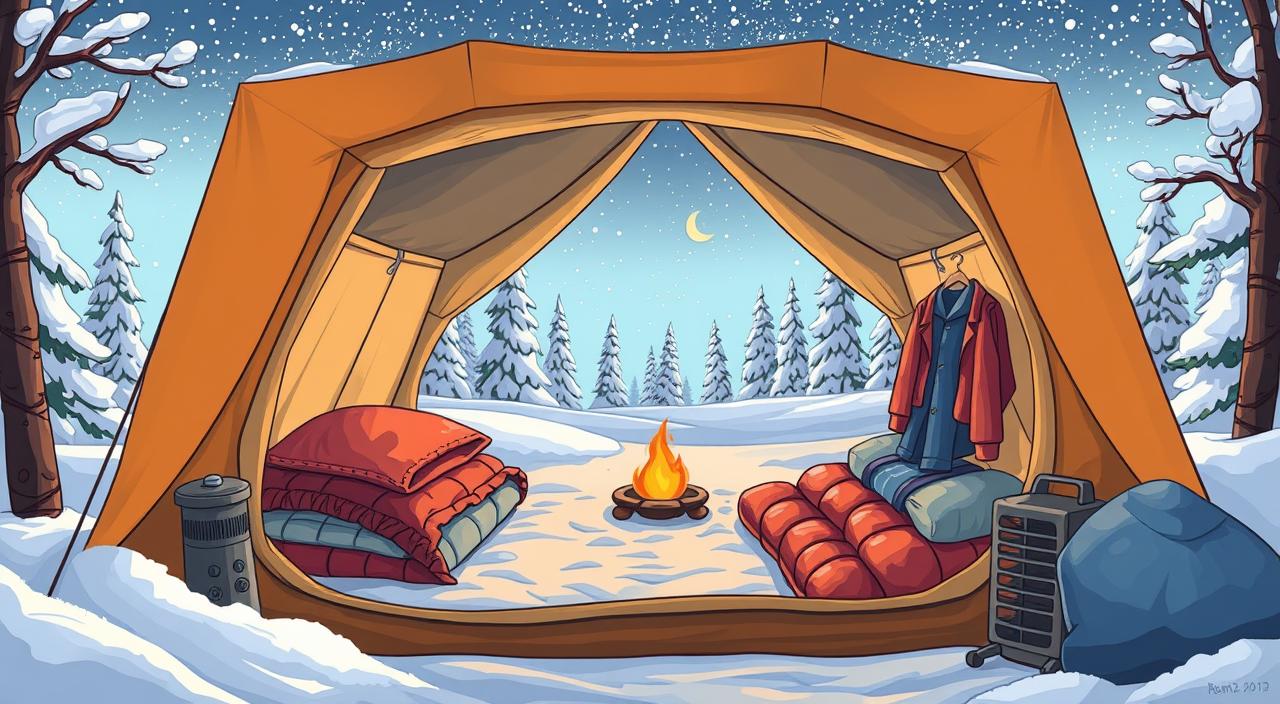
Disclaimer: This post may contain affiliate links. As an Amazon Associate, we earn from qualifying purchases.
Ever wondered why some campers do well in the wild while others don’t make it past the first night? It’s not just about being excited for the trip. It’s about knowing survival secrets that make your camping trips safe and enjoyable. When you go on long camping trips, you need the right gear and knowledge to face nature’s challenges.
In wilderness camping, facing the elements is a big challenge. You can get exposed in just three hours, and dehydration can set in after three days. This guide will teach you the basics of long-term tent camping. It will give you the skills and knowledge to survive and enjoy the outdoors.
Key Takeaways
- Understanding shelter selection and its impact on survival can save you from the elements.
- Water purification techniques are crucial for safe hydration in the wilderness.
- Knowing how to build a sustainable fire is essential for warmth and cooking.
- Adequate preparation can significantly reduce the risks associated with long-term camping.
- Leveraging eco-friendly practices can enhance your camping experience while preserving nature.
- The right gear can make all the difference during extended camping excursions.
The Essentials of Long Term Tent Camping
Long-term tent camping needs careful planning and the right gear for a great outdoor adventure. You’ll want a strong tent and a sleeping bag made for the weather you’ll face. These are the basics of your camping trip.
Having a comprehensive camping checklist keeps you organized and makes sure you don’t forget anything important. Your list should include:
- Durable camping gear, such as a LiFePO4 battery pack for reliable power.
- Portable cooking supplies, including a foldable grill and cooking ware sets.
- Hygiene essentials like camp showers and portable toilets to maintain cleanliness.
- Reliable navigation tools, such as GPS devices, to explore unfamiliar territories.
- Multi-purpose tools like knives and shovels for various tasks.
Storing water and food is key to keeping you going. Use water filters for safe drinking water and coolers like the soft Yeti Cooler to keep food fresh. Also, think about using eco-friendly ways to dispose of waste and follow Leave No Trace principles.
Choosing the right camping gear is not just about how well it works. It’s also about picking things that are both durable and light. This way, you can enjoy your time in nature longer and stay safe.
Preparing for Extended Camping Trips
Getting ready for long camping trips means planning well to have a great time in nature. Start by making a realistic plan that fits your skills and how much you can do. Remember, some parks only let you camp for 14 days. So, pick your spot carefully to enjoy your outdoor adventure fully.
It’s important to know about the weather and wildlife at your destination. This helps you choose the right gear and stay safe. Weather can change your camping trip, so bring rain gear and layers. Some parks let you stay longer if you get the right permits.
Living in a tent for a long time means being kind to the environment. Use energy sources that don’t run out. Make sure you know the rules about camping, especially on private land. In cities, camping might not be allowed everywhere, but some places let you stay for a bit.
Always find a clean water source. Using a water filter or purification tablets is a good idea for places far from civilization. This keeps you safe and healthy.
Don’t forget important things like lights for walking at night. A good first aid kit is also key for emergencies. It should have things like antiseptic wipes and bandages. Make a list of what you really need for your trip to make it fun.
| Essential Gear | Purpose |
|---|---|
| First Aid Kit | Handles emergencies |
| Light Sources | Navigating at night |
| Water Filtration System | Ensures safe drinking water |
| Proper Clothing | Provides comfort for weather conditions |
Getting ready for a long camping trip means getting everything in order and knowing the environment. With good planning, you can enjoy your camping trips to the fullest.
Understanding Long Duration Outdoor Living
Living outdoors for a long time changes how you see your day. It makes you think differently and change your habits. Many people choose this life to live simpler, save money, and be closer to nature.
This lifestyle is cheaper, more flexible, and encourages living with less. You focus on what matters, not just owning things. Living in a tent saves a lot of money on rent, bills, and utilities.
Being close to nature is good for your mind. Studies show it lowers stress, boosts creativity, and makes you feel better emotionally.
But, living outside for a long time has its challenges. You’ll face weather issues, limited space, and privacy problems. You need to be flexible and strong to overcome these.
You must plan for all kinds of weather and use your things wisely. Choosing the right place, staying safe, taking care of your tent, and finding a supportive community are key.
Popular tents for living outside include Bell Tents, Yurts, and Teepees. Each has its own benefits. When picking a tent, think about how long you’ll live there, how it stands up to the weather, and how well it lets air in.
The White Duck Regatta Canvas Bell Tent is a great choice. It’s comfy, has lots of room, and works well in all seasons.
Changing your life to live in nature can be very rewarding. You’ll get better at solving problems and becoming more flexible and resilient. This change will make you feel closer to the earth and lead to a more meaningful life.
Setting Up Your Tent for Success
Setting up your tent right can make your camping trips better. It gives you comfort and keeps you safe from the elements. Picking the right tent for long stays is key. Look for size, weather resistance, and strong materials for lasting use. You can choose from single-room tents for a few people to big cabins for families or groups.
Choosing the Right Tent for Long-Term Use
When picking a tent for long stays, keep these points in mind:
- Durable materials like polyester or nylon
- Weather-resistant designs with rainflies
- Spaciousness to prevent overcrowding
- Easy setup processes, such as dome tents with flexible poles
- Weight considerations for portability
Each tent type meets different needs. For instance, inflatable tents are quick to set up, while geodesic tents are strong in bad weather. Knowing what you need helps you choose the right one.
Substrate Selection and Protection Techniques
Choosing the right ground cover is key for insulation and keeping moisture out. Make sure the ground is flat and clear before setting up. A tarp can be a great moisture barrier. Here are some tips for picking the right ground:
- Choose level, dry ground for tent placement
- Avoid areas prone to flooding or high moisture
- Utilize ground tarps to protect tent floors
- Opt for sleeping pads or air mattresses for extra insulation and comfort
By focusing on the right tent setup and ground choice, you can make your camping trips enjoyable. This way, your long-term tent experience will be memorable.
Mastering the Art of Wilderness Survival
Learning wilderness survival is not just about physical skills. It’s also about being mentally ready. Staying calm and focused helps you make better decisions in tough situations. It’s all about knowing what to do first.
Maintaining a Calm Center in Stressful Situations
When you’re in a tough spot in the wilderness, keeping calm is key. Panic can make you make bad choices. To stay calm, try deep breathing and grounding techniques. These help you focus on what you need and make clear decisions.
Essential Survival Priorities: Water, Food, Fire, Shelter
Knowing what to do first is crucial in the wilderness. You usually need:
- Water: You can only last three days without it. Find it in ponds, rivers, or lakes. In cold places, snow can be melted for water. Always clean the water by boiling or filtering it.
- Food: You can find food by foraging, hunting, or fishing. Learn about plants that are safe to eat. Books like “Edible Wild Plants” by Lee Allen Peterson can guide you.
- Fire: Fire is important for warmth, cooking, and safety. Use natural materials and learn how to build one right.
- Shelter: Make a shelter fast, ideally in 15 minutes. Pick a spot away from falling branches and protect you from wind and rain.
Knowing these survival basics makes your wilderness trip safer and more successful. Planning ahead with the right knowledge helps you stay calm when things get tough.
| Survival Needs | Key Tips |
|---|---|
| Water | Sources include ponds and rivers; purify before drinking. |
| Food | Learn to forage, hunt, or fish; know local edibles. |
| Fire | Build for warmth, cooking; gather natural materials. |
| Shelter | Construct swiftly; focus on protection from elements. |
Long Term Tent Camping: Key Survival Skills
Learning survival skills makes camping better and safer. You’ll know how to find clean water, start a fire, and gather food. These skills help you stay safe and comfortable outdoors.
Water Purification Techniques
It’s crucial to purify water in the wild. Natural water can have harmful stuff in it. Here are ways to make sure your water is safe:
- Boiling: Boil water for a minute to kill germs.
- Filtration Systems: Use portable filters for quick cleaning.
- Solar Stills: Use the sun to make clean water, great for dry places.
Building a Sustainable Fire
A good fire is key for warmth, cooking, and staying positive. Knowing how to build different fires will make your trip better. Here are tips for a successful fire:
- Look for dry wood close by.
- Try different fire types like teepee or log cabin for better heat control.
- Have cold food ready if starting a fire is hard.
Food Gathering and Preparation Strategies
Knowing how to find and prepare food is important for long trips. Here are some tips:
- Foraging: Learn which wild plants are safe to eat for a varied diet.
- Basic Hunting and Fishing: Understand local rules and how to hunt or fish safely.
- Macro Nutrient Planning: Plan your meals with fats, carbs, protein, and enough calories.
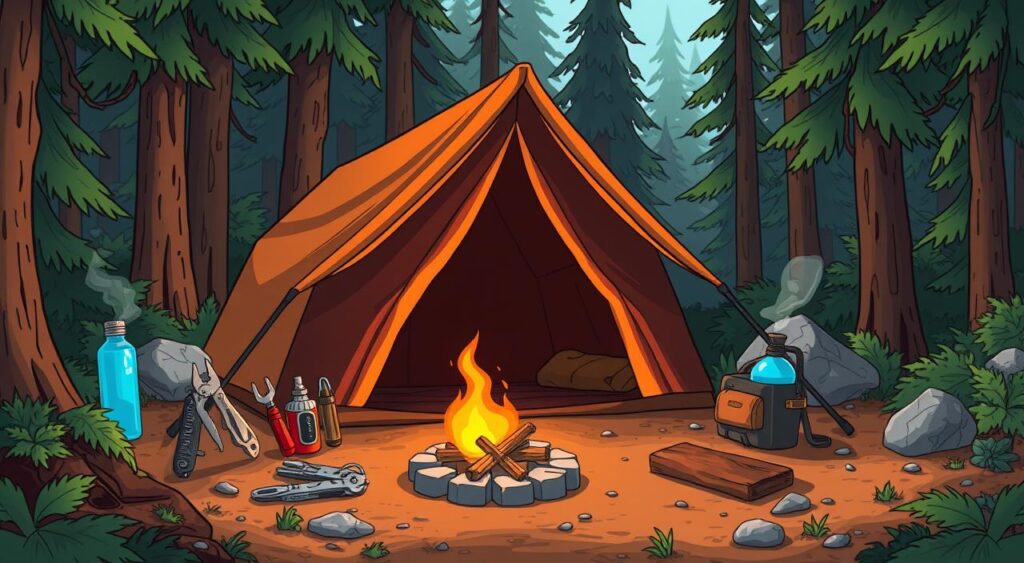
Health and Safety Considerations for Long-Stay Wilderness Camping
Going on a long camping trip means you need to think about health and safety. It’s important to be ready for things like cuts, scrapes, and dangers from nature. This makes your camping trip safer.
First Aid Essentials While Camping
Having a good first aid kit is a must. Your kit should have:
- Adhesive bandages of various sizes
- Antiseptic wipes and ointment
- Pain relievers such as ibuprofen or acetaminophen
- Elastic bandages for strains and sprains
- Tweezers for removing splinters or ticks
- Scissors for cutting tape or clothing
- Insect repellent for protection against bites
- Sunblock to prevent skin damage
Knowing how to do basic first aid, like treating burns or doing CPR, is key. It helps keep you safe while you’re outside. Being able to spot and treat common injuries like strains or bug bites can also make your trip more comfortable and safe.
Staying Safe from Wildlife and Environmental Hazards
It’s important to avoid dangers from wildlife. Knowing how animals behave in the area helps you stay safe. For example, keep your food away from animals to avoid attracting them. Always keep a safe distance from wild animals and know what signs to look for to stay out of danger.
Weather can also be a big risk, like lightning or extreme cold. To be ready, check the weather before you go and bring the right gear. Make sure you have:
- Warm clothing to protect from cold
- Proper sun protection to reduce UV exposure
- Emergency shelter for unexpected weather changes
Being well-prepared helps you handle risks and enjoy your camping trip. Focus on learning about first aid and staying safe to make your adventure fun and secure.
| Potential Injury | Common Causes | First Aid Response |
|---|---|---|
| Blisters | Friction from improper footwear | Cover with bandage, keep clean |
| Sprains/Strains | Overexertion or falls | Rest, ice, compression, elevation |
| Insect Bites | Exposure to bugs | Clean area, apply antihistamine |
| Burns | Hot equipment or sun exposure | Cool with running water, protect with sterile dressing |
| Cuts/Scrapes | Falling or sharp objects | Cleansing, then bandage |
Gear and Equipment for Extended Tent Dwelling
Starting a long-term tent living adventure requires the right camping gear. It’s not just about picking a tent. It’s about finding gear that fits your lifestyle and the place you’re staying.
Choosing the Right Camping Gear for Your Adventure
Choosing durable, reliable gear is key to a successful outdoor trip. A waterproof tent like the WHITEDUCK Regatta Canvas Bell Tent is a great choice. It keeps you warm and dry in all kinds of weather. Don’t forget a warm sleeping bag and comfy shoes.
- Look for a tent that is 2 to 4 sizes larger than necessary.
- Merino wool clothing provides comfort and moisture management.
- Include essential supplies such as a first aid kit and reliable communication devices.
Creating a Portable Cooking Setup
Having a good cooking setup is important for staying healthy and happy in a tent. You can choose from ground fire pits to compact stoves. A wood stove can cook and heat your tent, while propane tanks can last over two months.
Outdoor kitchens give you a space like home for cooking and eating with your family. Make sure your cooking gear fits your needs and helps you live sustainably. For more info on camping gear, check out living in a tent long-term.
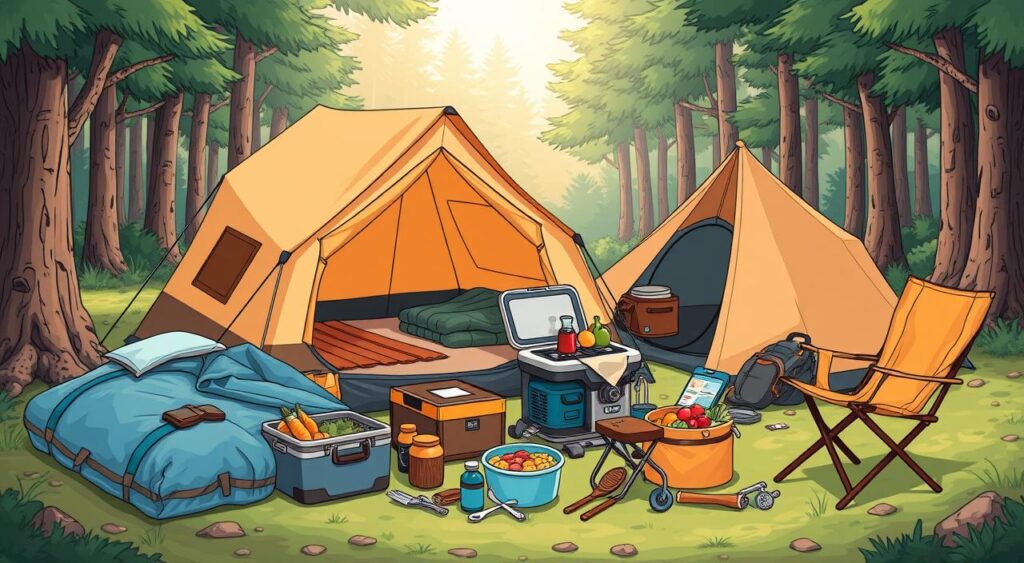
Tips for Prolonged Backcountry Adventures
Going on a backcountry adventure needs more than just excitement. It also requires careful planning to make your trip better and safer. Having the right resources is key to enjoying your trip and making it a success. Using backcountry adventure tips can help you make the most of your camping and manage your supplies well.
Maximizing Your Camping Experience
It’s important to have routines and fun activities to connect with nature. Activities like hiking or watching wildlife can turn your trip into something unforgettable. Setting daily goals can also boost your mental strength, which is great for long wilderness stays.
- Use a memory foam sleeping pad for better comfort and it’s easy to store.
- Choose gear like candle lanterns and reliable battery lights for clear light in the dark.
- Think about portable cooking setups, like wood-burning stoves, for fun cooking on cold days.
Managing Time and Supplies on Extended Trips
Managing your time and supplies well is key for long camping trips. Start by knowing how much gear you have and how to use it wisely. Plan your meals, think about when you’ll be hungry, and what you need for energy. Check the weather before you go, with lows around 48°F and highs in the 60s to 80s.
| Temperature Range | Considerations |
|---|---|
| Below Freezing (Winter) | Get the right gear like a sleeping bag lining and keep clean for health. |
| 48°F Average Low | Dress in layers with wool or synthetic materials for staying warm and dry. |
| 60s to 80s Highs | Drink plenty of water by carrying two water bladders or bottles. |
Keep these tips in mind to enjoy your long trips and manage your gear well. This will make your adventure both fun and safe.
Long-Haul Camping Excursions: Planning and Logistics
Planning is key to a great long-haul camping trip. Mapping out your route can make a big difference. It affects how easy it is to find water and how tough the hikes will be. Knowing these things helps pick the best places to go and makes camping easier.
Making the Most of Your Route and Destination
Start by choosing a good route. Aim for drive times of two hours on weekends for quick trips. Save longer drives for big events. This way, you have more time to enjoy the campsite.
For 48-hour trips, you’ll spend less and get 33% more time camping than shorter trips. Pick places like national parks and forests. They’re less crowded and often cheaper than private spots.
Cooperation and Communication in Group Camping
Group camping needs clear plans and teamwork. Decide on roles early so everyone knows what to bring and do when you arrive. Working together is crucial for a successful trip. Plan meals that are easy to make in large amounts to manage food better and make the trip memorable.
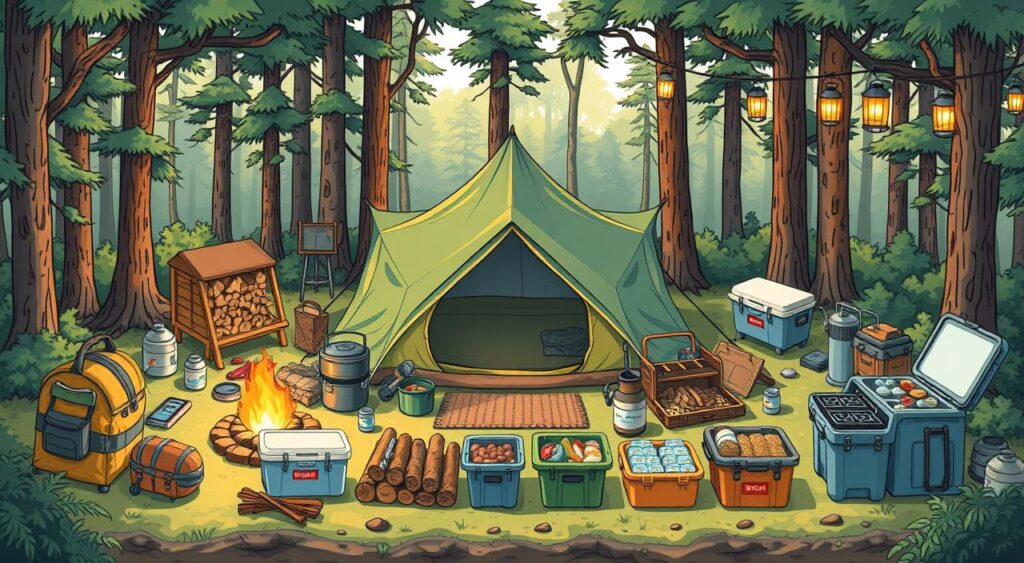
| Camping Duration | Average Cost | Camping Time per Hour | Drive Time |
|---|---|---|---|
| 36 hours | $40 – $50 per person | $1.11 | Up to 2 hours |
| 48 hours | $60 | $1.25 | Up to 2 hours |
A good plan makes for a better camping trip. Focus on packing smart and saving setup time. This way, you can enjoy nature more and less time on camp setup.
Environmental Awareness and Sustainability Practices
Going camping with an eye on the environment is key to keeping our natural places beautiful. By using sustainable practices, you help protect nature and make your trip better. One great way to do this is by following the Leave No Trace principles. These rules help you leave the outdoors as you found it, so others can enjoy it too.
Leave No Trace Principles for Long Term Camping
Adopting the Leave No Trace principles means you’re being a responsible camper. Here are some steps you can take:
- Stay on marked trails to avoid harming the soil.
- Throw away trash properly, including leftovers and toiletries.
- Keep a safe distance from wildlife.
- Use soap and cooking gear that breaks down easily.
About 75% of campers follow these rules to lessen their impact on nature. This shows more people are thinking about how their camping affects the environment. More campers are also choosing gear made from recycled or organic stuff.
Eco-Friendly Practices in Campsite Management
How campsites manage waste is crucial for being green. Good waste handling and recycling help lessen the harm camping can do to the environment. Here’s how you can help:
- Use toiletries that break down easily to protect nature.
- Save water, as making a bottle of water uses three times more water than filling it.
- Follow the rules of the campsite to lessen harm to nature.
Studies show 70% of campers are saving water and energy on their trips. This shows more people are caring for the planet through their camping. Using eco-friendly gear and composting is becoming more common. These actions cut down on waste and make camping better for everyone.
| Practice | Percentage of Campers Adopting |
|---|---|
| Using Sustainable Gear | 60% |
| Practicing Leave No Trace | 75% |
| Conserving Water and Energy | 70% |
| Following Campground Rules | 65% |
| Respecting Wildlife | 80% |
Being part of environmental awareness camping makes you a guardian of nature. By adding sustainability to your camping, you keep our natural places safe for everyone. The demand for eco-friendly camping gear is growing as we move towards a greener future.
Conclusion
Mastering long-term tent camping means learning key skills and getting ready for success. It’s important to know the rules, whether you’re in a campsite or on private land with permits. Always check the local rules, as they can vary from place to place.
When you go on an adventure, it’s key to know how to survive in the wild. Make sure you have the right gear like a good tent, cooking stuff, and a first aid kit. Also, watch out for dangers like poisonous snakes and changing weather.
Being in the wilderness for a long time is about facing challenges and being ready for surprises. With good planning, an open mind, and a love for adventure, your camping trip can be unforgettable. So, get ready to enjoy nature and make memories under the stars.







